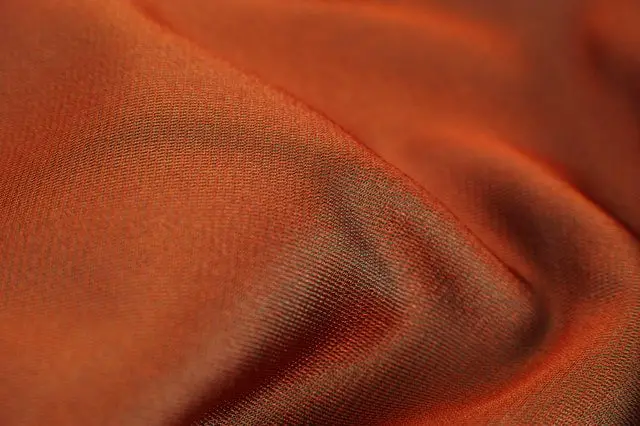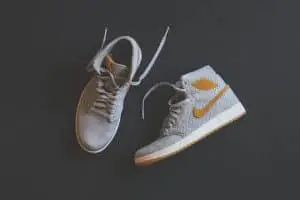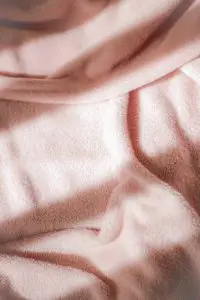If you’re looking for a luxurious fabric that features pile, consider velvet and velveteen. These options will fit in well with your project as they have distinct features they bring to the table. Velvet is known for its softness and fantastic sheen. It features silk fiber and is usually thicker than other similar fabrics. It was initially a fabric worn by the nobles alone. Soon, another velveteen fabric entered the picture with the same look and feel as the velvet fabric. However, as this velvet vs velveteen comparison will point out, they’re not the same.
However, you may be wondering if the names are the only similar feature they have or if they are the same. You’re not alone, as most people find the two fabrics confusing, especially when placed next to each other. Although these two fabrics have similar names, there are many distinctions between them, as we’ll be pointing out in this velvet vs velveteen comparison. We’ll also explain the intended use for these fabrics and the best way to maintain them. We hope there’ll be no more confusion about the differences between velveteen and velvet by the end of this article.
Velvet vs Velveteen – What is Velvet?
Velvet is quite soft, like silk and rayon. However, it is a thicker option than other varieties of fabrics made from silk fiber. This is because velvet is a blend of silk and rayon on a loom. It is created so that you can feel the pile effect on the fabric when you hold it. Velvet is quite ancient and dates back thousands of years ago. Initially, velvet was discovered in Kashmir and exported to West Asia. From Asian countries, velvet entered western countries. People used to make velvet by hand in the past, so it was pretty expensive and only worn by kings and the nobility.
Caring for velvet also requires careful attention because of its delicate feature. In addition, it is pretty difficult due to the pile effect. Velvet has come a long way from its early days as it now features different fibers like cotton. However, velvet fabric is still the most expensive variety in the market. There are also synthetic velvets made from a blend of nylon and polyester. Today, you can find a combination of wool and linen in velvet fabrics.
How is Velvet Made?
Manufacturers create velvet as a woven fabric by weaving two layers together and joining them with a second warp thread. After cutting the pile, the long loops form a thick, three-dimensional texture that makes velvet popular when creating fashion apparel and luxury home décor items. Because of its high pile, you can cut velvet fabric ‘pile up’ or ‘pile down.’ It usually depends on whether you want to see the luxurious shine of the material or if your focus is on the richness of the color. Velvet is a unique fabric because you can change its look by running your hand across the surface of the finished fabric.
The threads used in creating velvet determine the price point of the different fabrics. The most luxurious velvets feature silk fiber. However, you can produce an alternate velvet using rayon or polyester. The different types of velvet come in various weights and have several uses.
Velvet vs Velveteen – When to Choose Velvet
Depending on the weight of the velvet, it is a great choice when creating evening wear and high-end outfits. Velvet is also a popular choice for making luxury upholstery. If you want to use silk velvet but with little maintenance needs, you should go for throw pillows. Velvet is a luxurious option. Despite its thickness, it is pretty smooth to touch. Although it doesn’t offer any stretch, it is ideal for creating a beautiful drape on gowns or upholstery designs like luxe curtains.
Velvet vs Velveteen – What is Velveteen Fabric?
Velveteen is a fabric manufactured using the pile effect of velvet. It gives the wearer a feeling of smoothness and softness. However, we still don’t think it compares to velvet in softness and sheen. Additionally, you can’t get the denseness that accompanies velvet. Usually, velveteen features cotton fiber, so it lacks the shine of velvet. However, it is a valuable and affordable fabric for many purposes. Although you cannot use velveteen to create a beautiful drape on clothes, it is excellent for many other apparels. They’re also available at a fraction of the price of velvet fabric.
How is Velveteen Made?
Usually, velveteen features cotton or cotton fabric. However, it is a woven fabric that doesn’t offer any material. That’s one similarity you’ll find in this velvet vs velveteen comparison. It also has a short pile when compared to velvet. The loops are usually cut with a short nap with velveteen to add a dense feature to the fabric. It is pretty smooth but also quite durable. It offers a matte finish that gives it a unique look quite different from velvet.
Velvet vs Velveteen – When to Choose Velveteen
Velveteen is a popular choice in the production of soft furnishings and upholstery. It is also among the top fabrics for creating different apparel in the fashion industry. It is popular in structured garments and any clothing that requires more durability, like childrenswear. Manufacturers use velveteen because of its stiff and dense finish.
It is tauter than velvet and, therefore, cannot provide you with the draping properties familiar with velvet. However, you can use it for jackets, sportswear, bedsheets, and home décor accessories. Velveteen is quite similar to suede. Therefore, you can wash and iron them; you need to turn them inside out for the best results. Overall, it is a good option for clothing.
Velvet vs Velveteen – Main Differences
Knowing the difference between velvet and velveteen can be difficult if you don’t know what to look for. Therefore, in this section of the velvet vs velveteen comparison, we’ll be exploring the key differences between velvet and velveteen. So, without further ado, let’s take a look.
Fiber Composition
One of the ways the two fabrics differ is n the fiber composition. Also, the fiber used in their production affects the drape of the fabric and its uses. Velveteen’s base fiber is 100% cotton. However, many variations are available today. As such, you might see polyester, wool, or a blended variety.
On the other hand, velvet comes from 100% silk. When using synthetic fibers in its production, only fibers mimicking silk-like nylon, rayon, acetate, or polyester are used. Although cotton velvets are available, they’re common in upholstery, and it can be quite challenging to tell them apart from velveteen.
You can find more variations of velvet than there are of velveteen. That’s why there are different velvet weights available. On the other hand, you will only find velvet in medium-weight varieties. There are also varying types of velvet as opposed to velveteen. Some include embossed velvet, crushed, panne, and burnout velvet.
Pile or Nap Construction
The pile of velveteen and velvet is elevated fabric fluff. This is because both fabrics feature a pile on their surfaces. However, the construction method of the pile differs for both materials. Velvet features a warp-pile, constructed using an extra-long yarn woven into the fabric. This process helps to create the pile in the fabric.
On the other hand, velveteen is quite similar to corduroy. It is a filling pile fabric created with cross-grain yarn. Therefore, the pile is usually shorter than velvet.
Pile Features
Because of the fiber composition and construction process of velveteen and velvet, the fabrics also feel quite different to the touch. The velvet pile is usually higher and more erect. Therefore, it is softer to the touch. Additionally, it offers a better drape, so it is common in formal evening wear and other fancy occasions. Finally, velvet provides a luxurious sheen and much more color than you’ll get from velveteen.
On the other hand, velveteen offers a denser pile, stiffer, and less supple to touch. As a result, velveteen is far more durable, so many manufacturers use it for sportswear, childrenswear, and outdoor clothing. It is the right fabric for producing items with more wear and tear.
Common Uses
Velvet might be the winner in this velvet vs. velveteen comparison when it comes to uses. It is popular in producing evening dresses, shirts, and even home furnishings. It offers several characteristics you’ll want in your snazzy apparel as it was initially a fabric for royalty. On the other hand, velveteen is a common choice for home furnishings. It is popular when creating cushions, pillows, draperies, and many more home décor items. In addition, it is a common choice for items that need to be durable and easy to wash.
Durability and Maintenance
Because it features cotton fiber, velveteen is more durable than velvet and is more likely to withstand stains and wear and tear. However, it can be challenging to wash and dry velvet because of its delicate surface. On the other hand, it is pretty easy to machine-wash velveteen. Additionally, ironing velveteen is relatively easy, unlike the velvet fabric.
Velvet easily shrinks. Therefore, manufacturers need to prewash the fabric before sewing. It is also crucial that you tumble-dry on low heat when you need to revive the pile. One type of velvet that’s not as delicate is cotton velvet because it shares the features and durability of velveteen.
Sewing Consideration
You require more skills to sew velvet than you need to sew velveteen. Sewing both fabrics require a nap layout when you’re cutting pattern pieces. However, you can usually find the nap when you move your hand over the material. You need to locate the way that offers you less resistance. Consistency is essential when you’re using a nap layout. You need to cut the pile facing up for velvet to preserve its luxurious appearance.
On the other hand, velvet is more of a nap-down direction fabric as this direction will preserve its durability feature. However, velvet and velveteen also fray at the edge, so you need to be careful and find a way to make the edges neat. Most fashion designers find working with velvet challenging and switching to velveteen. This is because it is similar to corduroy and offers medium weight.
A Great Online Class: Color Theory for Textile Projects by Domestika
If you are interested in learning more about how you can create a successful name for your business, we recommend taking a look at the online class “Color Theory for Textile Projects”.
The course is currently under promotion, but you can use the discount code: T_BROWNLEES-PROMO to get an additional 10% discount on your purchase.
This online class offered by Domestika, at a very inexpensive price covers all you need to know to develop your textile project by leveraging color theory to create the perfect color palette. If you apply to the course through the link below you’ll be supporting 440 Industries, and we thank you for it!
Velvet vs Velveteen – Final Thoughts
Although they’re pretty similar, these fabrics have different features. Velveteen comes from cotton and is more durable, duller, and stiffer. Moreover, it is far easier to sew velveteen than velvet. On the other hand, velvet is luxurious, softer, and offers a drapey look when added to gowns. Choosing the best option for you usually depends on the look you’re going for and the features you want in your fabric.








